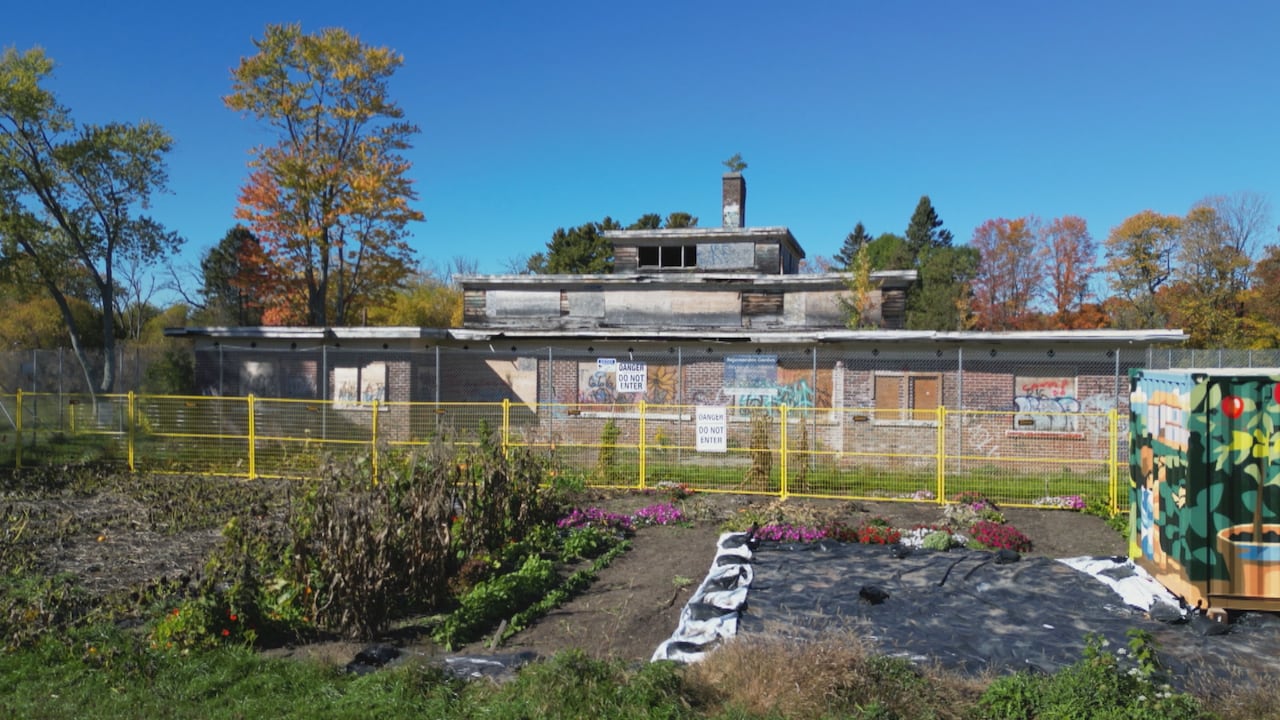Marilyn Morawetz looks at the crumbling walls of a historic cafe building and still finds beauty in its prairie-style architecture.
“You almost never see them in an industrial setting like this,” he said. “If this goes down, our real fear is that everything will go down and that would be an incredible shame.”
The 100-year-old building closed in 2008 and sits in disrepair alongside five other heritage buildings that once formed Camp 30, just outside the town of Bowmanville, Ontario.
The nationally designated historic site served as a boys’ reformatory when it first opened in the 1920s. During World War II, it was converted to house German prisoners of war (prisoners of war).
“This site had, at its peak, 800 prisoners of war”Morawetz said.
“When they (the prisoners of war) had the reunion in 1992, and they sat down and made a meal in the school cafeteria that was here and just remembered all those things. “It was quite fascinating.”
The cafeteria is where the Battle of Bowmanville took place, a three-day revolt led by prisoners. According to Morawetz, it is considered the only World War II battle on Canadian soil that was fought with hockey sticks and pipes, rather than firearms.
He chairs the Jury Lands Foundation, a nonprofit organization that oversees the site’s preservation. But that could soon come to an end, when Clarington council votes on what to do with the cafe, its only city-owned building.
“It’s a serious crossroads for us,” he said.
“Council is considering demolition and with the current economy, keeping a property like this safe for the community, especially in this state, is a challenge.”
In 2022, Clarington negotiated to take ownership of the café from Kaitlin Corporation, leaving the heritage buildings and remaining land under the developer’s portfolio.
Initially, he explored completely restoring the site, but discovered it would cost more than $20 million. The council tasked staff with finding alternatives, which were presented in June this year.
Options vary greatly in cost, the cheapest of which is demolition.
From camp to community center
Another option could have Clarington temporarily stabilize the building, making it safer for the public.
According to Morawetz, doing so would help with necessary maintenance and allow for community use of the space.
“If the building can be stabilized and made safe, it could last 20 years without further investment,” he added. “But in the meantime, if it was useful to community groups, it would serve a wonderful purpose.”
A garden has already been planted near the cafe, which Morawetz said had been used this summer to donate fresh produce to local food banks.

He said other community groups have expressed interest in meeting and using the space for events.
“We’ve all come to an agreement that it would be very helpful for the community to have a place where people can come together and feel like they have the space to offer the programming that they would like to offer.”
It all comes down to “dollars and cents”: mayor
Clarington Mayor Adrian Foster isn’t sold on that idea.
While it is significantly cheaper than a full restoration project, he is concerned that stabilization may not be viable in the long term.
“I think it’s going to come down to dollars and cents,” Foster told CBC News.
“If we can justify a significant amount of money, that would stabilize it for about two years. We would have to review it in two years.”
Foster said he is in favor of tearing down the cafeteria and replacing it with a replica of the building.
Doing so, he said, would help preserve its history without the same challenges and costs associated with renovating the existing structure.
“Stories are more important than bricks and mortar,” he added.
A new settlement offer
The Jury Lands Foundation is asking the city council to reject that option.
Instead, Morawetz said he should look to fund building stabilization through community benefits charges, a provincial tool that supports the reuse of historic buildings for public benefit.
He said there are also provincial and federal endowment grants available to explore.
He also hopes a new offer from the owners of the existing land will give councilors room to manoeuvre.
Kaitlin Corp. is offering all remaining buildings and land to the municipality, giving up any future development on the land, in exchange for it being dedicated to park space.
Doing so would meet the developer’s requirement for park space in its nearby development.
It is also offering to provide an equivalent value in demolition costs, should Clarington decide to restore all buildings on the site.
“This settlement offer represents a significant ‘win’ for the township and community members who wish to preserve and/or commemorate the property’s cultural heritage,” reads an Oct. 3 letter to council from Kaitlin Corp.
Clarington is already struggling to fund partial preservation of the cafeteria building.
At an Oct. 6 meeting, staff told council that entering into the agreement could force the municipality to rule out another nearby park development because of the costs associated with both.
But Morawetz believes Clarington councilors will need more time to think about their options now that the offer is in place.
The city council will debate the future of the cafeteria on Monday.








